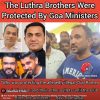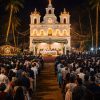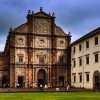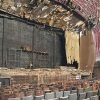Goa is abuzz with excitement as vintage bike and car owners, users, collectors and fans are decking […]
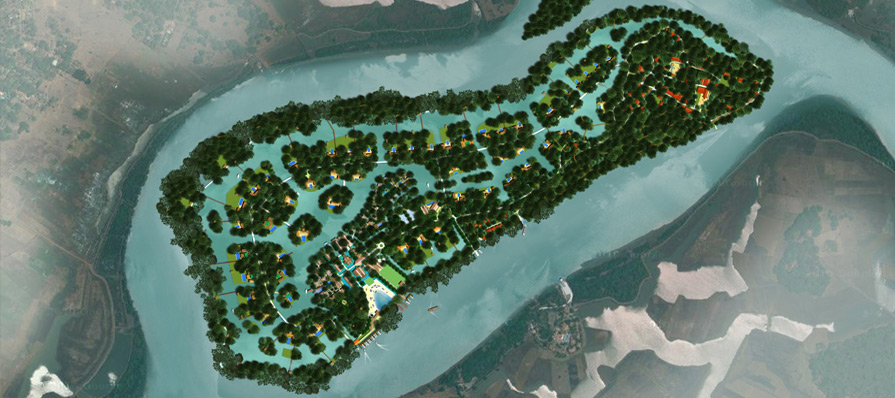
CORRUPTION AND CASTE IN GOA
Corruption, Dec 31 - Jan 06 2017 December 31, 2016CORRUPTION: The Church has been accused of selling property belonging to Santa Monica convent to a Bangalore builder
Rivers of ink and politics have flown in India, and that applies to Goa too, about the caste woes in India. Despite foreign incursions over centuries and the impact of their rules upon the Indian people and culture, they have not succeeded to any significant extent to change the Indian pysche into Koranic or Biblical mould
By Dr Teotonio R de Souza
By Goan
THE process of conversions has always its limitations. Given time, changes unravel, and caste hold is reinforced, causing dismay among foreign and native reformers, who seek to help “backward” Indians to break out of their cycle of ‘dharma, karma and sansara’ in order to attain the bosom of Abraham, or the heavens of later Semitic religions.
Incidentally, the early Jesuits in Goa had problems in translating ‘heaven’ in Konkani for their Goan Hindu converts. Their bhuimvoikuntta for earthly Paradise was tolerable for the Bardeskar Vaishnavas, but in no way acceptable to Sinays (Xennoy) and Shivites from Bamonn Kellxi (Kelossi), Kushastalli (Kortali) and the rest of Saxtti, for whom their Kailasa deserved continuity. The astute Jesuits then sought a compromise solution in a more neutral Indra’s Svarg.
CULTURAL PAST
JUST as we are increasingly aware of the illusions of modernisation about its broken promises, all linked with reason seeking the abandonment of the “wisdom” of the ancestors, we in India keep asking ourselves from time to time if western education is likely to ever replace our cultural past with anything substantially better.
Doubts prevail, and amid the reality of the globalisation of poverty, violence and mass dislocation of peoples, no political discourses of human rights seem to convince anyone of the blessings of the reason. We all know how monotheistic religions were instruments of cultural domination.
One God, one truth, were useful sets of doctrines and practices to subordinate and subdue people with their bodies and souls to the political ambitions of resource-starved medieval Europeans and Middle East Arabs, serving as a model for Oriental adventurers, the Afghans, Moghuls, and Turks.
Even if distant Indian rishis could be invoked to discuss the reasonableness of the world changes, or their illusion, independent India has continued to reflect upon the cultural holy trinity, including the glue of caste that binds and isolates the social units in a pattern that appears to the Western modern mind as a perverse cultural feature, the worse perversions of the old and modern western culture notwithstanding.
India’s second president S Radhakrishnan, an acclaimed philosopher, left among his more voluminous writings, a little book entitled The Hindu View Of Life, containing his Upton lectures, which he delivered at Manchester College, Oxford, in 1926.
To Western eyes, religion in India appears as a confusing tangle of myths, with many gods and goddesses worshipped in countless iconic and anthropomorphic forms. It is a complexity that jars and baffles outsiders who are also aware of the classic Indian treatises about geography, astrology, mathematics, medicine, music and dance, and the usual titillating Kamasutra.
Obviously the many cultural expressions and scientific achievements do not belong to the same social groups. But not unlike the modern times they co-existed and served mutual interests, more of some than of all. Radhakrishnan seeks to present beneath the superficial level of Indian culture a system of unifying beliefs that have guided the lives of ordinary Indian families for generations.
These beliefs have enabled India to be attuned to the changing experience of the rishis, not a faith based on dogmas. Unlike Christian and Semitic tradition that condemned and burnt persons for having different experiences and concepts of God, Hinduism has by and large been tolerant of the diversity of personal beliefs. There is no place for a jealous God, like the Yahweh of the Pentateuch whose wrath can destroy the unbeliever or the sinner. Buddhism and Charvakas of many brands have been part of Hindu tolerance.
NAZI UPSURGE
RADHAKRISHNAN was lecturing on the eve of the surge of European fascism and the growing threat of ethnic cleansing that would culminate with the Nazi extermination camps. He presented the Hindu solution to Europe, a solution that did not require ethnic cleansing. This Hindu solution was the caste system that provided a welcome to immigrant waves over centuries and integrated them in a way that maintained general harmony in the wider society. The tolerance should not however be reduced to indifference, but it does not force the pace of development.
What refugees/immigrants desire most in a host country or from a host society is that their family integrity is respected and their traditions of faith and eating habits. Anthropologically speaking, issues of endogamy and commensality. Radhakrishnan explains the castes doing just this. They isolate a new group to ensure their safety (not as discrimination, as understood by the modern mind) by not allowing racial mixing through indiscriminate marriages or eating together. Concern for heredity transmission that today we know better through genetics could justify the Hindu exogamy for savarna marriages.
Hinduism has always allowed controlled anuloma and pratiloma marriages. Alongside this isolation, they co-exist as professional groups which can contribute to the host-society with their skills. In the absence of modern professional schools, the castes preserved, improved and passed on specific skills from generation to generation.
The addition of new gods to the Hindu pantheon has never been a danger to Hinduism. Differences in name or designations as applied to gods and beliefs have never been a good motive to denounce heretics. The difference was explained by Shankara, who referred to the one Reality, who, owing to the diversity of intellects (matibheda) is conventionally spoken of (parikalpya) in various ways as Brahma, Vishnu, Maheshwara.
There are always fanatics with exalted ideas of their own, and this among the Hindus as well, particularly when the religious experience is assumed and explored by political interests. Curiously, Kautilya, the master politician of Indian antiquity and the author of Arthashastra does not mention anywhere priests crowning kings.
Kautilya’s model of kingdom was less advantageous to Brahmins. The state controlled much of the wealth and property of the temples and shrines, which also served as centres of spying for checking up on dissidents and to take the pulse of the reactions of the common people to the administration. Religion was made to serve political interests, and so also the leading classes of Brahmins and Kshatryas. Kautilya found it more difficult to keep traders in check. He relied on a professional army largely recruited among the Shudras.
MODERN VALUES
CONTEMPORARY India, born from the self-proclaimed mother of all democracies, is hardly inclined to follow Kautilya’s teachings about a state-centred politics. It shares all the strengths and weaknesses of a bourgeois democracy, exploring well the cultural heritage of castes as and when convenient.
If castes have survived in India alongside modern changes, it has probably happened because there are still many who find in them some protection against the modern vultures that could reduce them to greater misery with political and academic discourses of human rights. Here I would refer my readers to D L Sheth, who has insightful studies about caste and the secularisation process in India. New political transformations in the caste system began under British colonial policies that wished to curtail the powers of the traditional elites.
The dynamics of democratic one-person one-vote was used by the Congress Party for nearly three decades after independence to win elections by wooing land-owning peasants with ambition for upward mobility groups; they were dominant, but traditionally of lower status, in various states, such as Marathas, Reddys, Patidars, Jats, Kammas, etc. This process allowed these middle elites to gain power and wealth in some states and to change their caste status to middle class status.
These classicised castes gradually eroded the power of the national Congress by bringing in coalition regional partners, who carried the pressure forward with demands for reservations in 1970s, and for the mandalisation of politics in 1980s, opening the space of Indian democracy to lower castes, which abandoned the Congress to form regional parties and regional alliances. The national parties now stand no chance of gaining power without the regional partners.
Goa has its own long history of castes, religion and politics. Christianity still maintains the colourful processions of the caste-based confrarias, and the numeric proportion of the lower castes among the hierarchy remains negligible. If it is not the land-owning dominant castes that entered the political fray since Liberation, Goa owes it to Bhausisation of politics under the leadership of D Bandodkar very early in the Indian politics.
His focus on planning for the development of rural areas and women created a fast path to development among the Goa’s bhaujan samaj. Political liberation in Goa coincided with major changes in the Church through Vatican II, that sought to harmonise the Church with the political demands of decolonisation. It was a process that brought Rev Raul Gonçalves to the top of Goan hierarchy, breaking away from the Brahmin-Chardo tradition of Church control. It forced the new archbishop to gain public acceptance by devolving powers to people through pastoral council and parish councils.
More on this can be read in my study about ‘The Church in Goa: Giving to Cesar what is Cesar’s”, in Norman Dantas, ed. The Transforming of Goa. The Other India Press, 1999, pp 58-67
With a growing demand for English education and a significant drain of Goa’s Catholic population emigrating to the West and to Australia with Portuguese passports, it looks as if the Goan lower castes are using these alternatives to the hilt to liberate themselves from their economic woes. On the eve of fresh elections, the future of Goa looks gloomy.
While the political parties never cease to promise the moon before elections, the reality that follows only brings more and more unbridled corruption. The Church too seems to have shown some ungodly rapacity in alleged land deals that were harmful to the poor faithful. Very soon the traditional caste system will not be the worst enemy of the poor in post-colonial, democratic Goa. Goa may attain faster than the rest of India the first two of the four Hindu Purusharthas: artha, kama, dharma, moksha.

